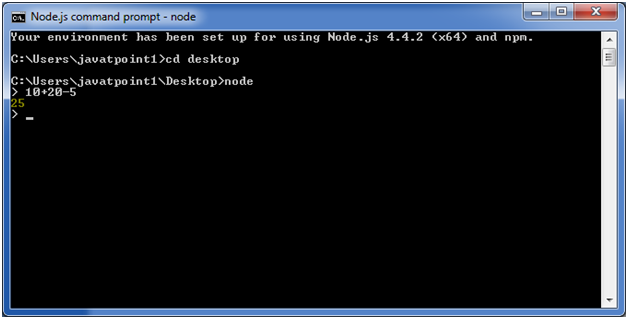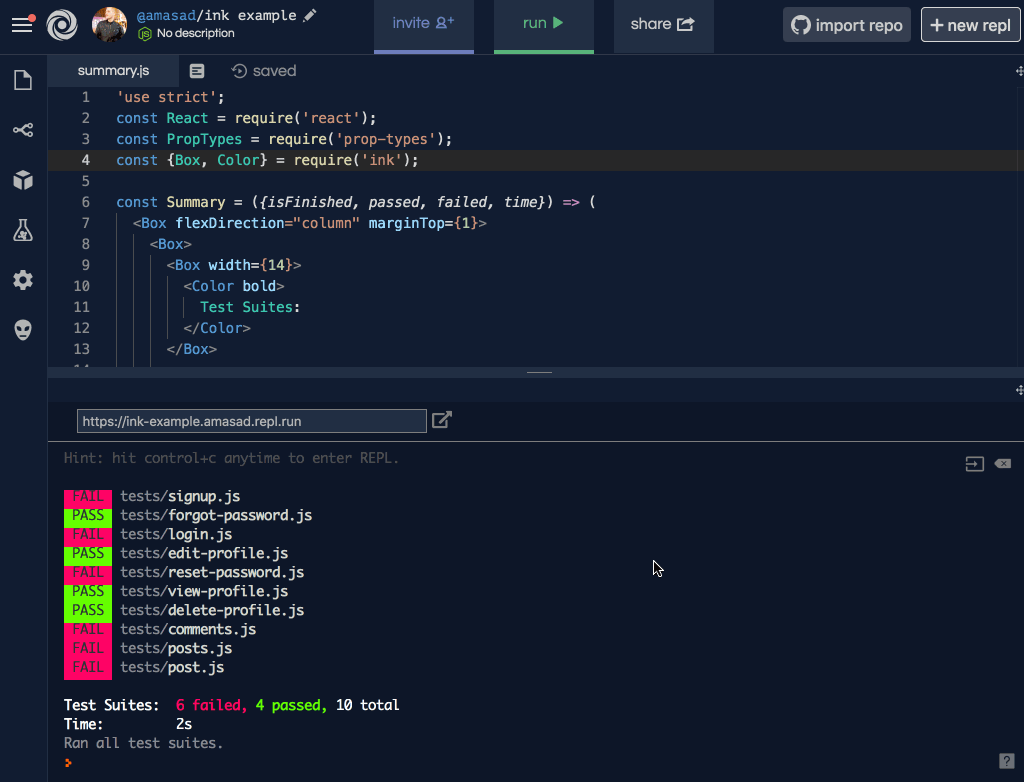

#Nodejs repl install#
#Nodejs repl update#


editor.įor example if you start typing an iteration like this: The REPL knows when you are typing a multi-line statement without the need to invoke. exit: exists the repl (same as pressing ctrl-C two times) save: saves all you entered in the REPL session to a file (specify the filename) load: loads a JavaScript file, relative to the current working directory clear: resets the REPL context to an empty object and clears any multi-line expression currently being input. break: when inputting a multi-line expression, entering the.
#Nodejs repl code#
Once you are in this mode, enter ctrl-D to run the code you wrote. editor: enables editor more, to write multiline JavaScript code with ease. The REPL has some special commands, all starting with a dot. If after some code you type _, that is going to print the result of the last operation. You can inspect the globals you have access to by typing global. The REPL will print all the properties and methods you can access on that class: Try entering the name of a JavaScript class, like Number, add a dot and press tab. The cool thing about the REPL is that it’s interactive.Īs you write your code, if you press the tab key the REPL will try to autocomplete what you wrote to match a variable you already defined or a predefined one. We can now enter a new line of JavaScript. The first value, test, is the output we told the console to print, then we get undefined which is the return value of running console.log(). Sugerencia: si no está seguro de cómo abrir su terminal, busque en Google "Cómo abrir el terminal en ”.Įl REPL está esperando que ingresemos algún código JavaScript, para ser más precisos.Įmpiece simple e ingrese > console.log('test') El comando permanece en modo inactivo y espera a que ingresemos algo. Add this repeating function at the end of the above script. Note that pending events and loops will block program exit. You should see something similar to the following: In addition, the "exit" callback fires, resulting in a print out of the message about exiting, and an exit code. Run the program with the command node batman.js, and you will see it output the first statement about Batman. Return console.log( `About to exit with code $`) You can see this by running the following scipt: // batman.js console.log( 'Batman begins') Implicitly, the Node.js process will exit when it reaches the end of the script. Letting a Script Exit ImplicitlyĮxiting from a Node.js program started at the command line can be as simple as waiting for the script to finish executing. We'll explain this in more detail throughout the article. While there are many ways to exit from Node, some ways are better than others for certain situations, like if you're running a REPL or not. Exiting the main process lets us exit from Node. You can spawn additional child processes to handle extra work. You need to understand first that Node.js works on a single thread or main process. In this tutorial we will show you the various ways of how to exit Node.js programs.


 0 kommentar(er)
0 kommentar(er)
